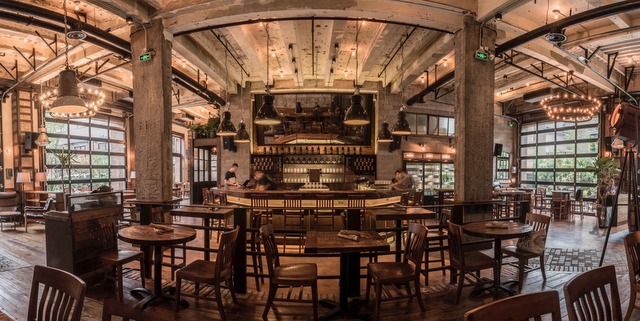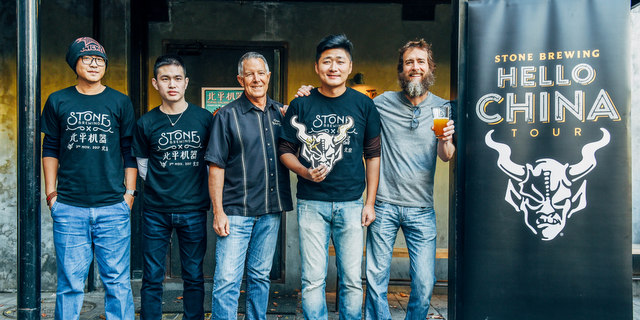
As you might expect, the history of alcohol is a little hazy. Historical types typically say mead, wine and beer became popular in that party rager we call the Neolithic Period (between 10,000 and 2,000 BC), which was basically a gussied up Stone Age/final chapter of technological development for prehistoric humans. Those old timers perfected stone tools, domesticated plants and animals, created permanent villages, dabbled in crafts such as pottery and weaving and (most importantly) produced booze.
Hell yes.
The experts (erm, Wikipedia) say beer could have been enjoyed as far back as 9,500 BC, when cereal was first farmed. Ancient Iraq and Egypt appropriately get lots of nods. Beer fans and historians love to trace the roots of brewing back to Sumar (first ancient urban civilization in the historical region of southern Mesopotamia/Iraq). The Sumerians were one of the first known beer-drinking societies. Check out the Hymn to Ninkasi, a song of praise to Ninkasi, the Sumerian goddess of beer. Awesomely enough, that hymn is also an ancient recipe for brewing beer (it dates back to 1,800 BC).
At the same time, China was way ahead of most of the world when it came to technologies way back when, including booze and beer production. Jars of alcohol that date to about 7,000 BC were found in Jiahu (the site of a Neolithic settlement based in the central plain of ancient China, near the Yellow River). Inside, the residue of rice mead was found, fermented using rice, honey and fruit.
When did the Chinese get into brewing beer? A recent discovery from Stanford University archaeologists might help us pinpoint a period. A few Indiana Jones types published a paper recently documenting the unearthing of what they think is an ancient brewery at the Mijiaya site in China’s Shaanxi province.
According to this CNN article:
The team found two subterranean pits with beer-making equipment that included funnels, pots and amphorae holding the residue of what probably was 5,000-year-old beer.
“The shapes and styles of the vessels show stylistic similarities to the brewing equipment in the historical period and modern ethnographic records,” said study co-author Jiajing Wang.
The archeologists believe the pits would have acted like an ancient cooler, helping in the beer-making process and with storage.
What type of beer did they brew? Well, according to the article, residue showed the presence of barley, broomcorn millet, tubers and something called Job’s tears (Chinese pearl barley or coix seed). Apparently, it makes for a sweet and sour kind of brew. According to CNN:
“This beer recipe indicates a mix of Chinese and Western traditions: barley from the West, millet, Job’s tears, tubers from China,” Wang said.
We know there’s been a growing interest in recreating ancient beers, and we always find it entertaining to drink such homage concoctions. Here are three of our favorite examples:
- Great Lakes Brewing worked with the Oriental Institute at the University of Chicago to replicate a 5,000-year-old Sumerian beer
- What would Jesus drink? An Israeli craft brewery looked to find out, brewing a biblical beer
- Dogfish Head Brewery goes crazy for ancient beer: Midas Touch, Chateau Jiahu, Kvasir and beyond.
Who’s willing to give this ancient Chinese beer a whirl?





5,000-year-old brewery found in China, we reminisce about ancient booze https://t.co/uQuab7p5HH
Jeremy Perri liked this on Facebook.
Alonso Zavala liked this on Facebook.
5,000-year-old brewery found in China + history of booze https://t.co/9YnY6Ujgsn
I really hope it was better than Tsingtao https://t.co/2O41pA8vQK
5,000-year-old brewery found in China + history of booze https://t.co/Xv79z5Q30P via @craftbrewingbiz
Todd Parker liked this on Facebook.